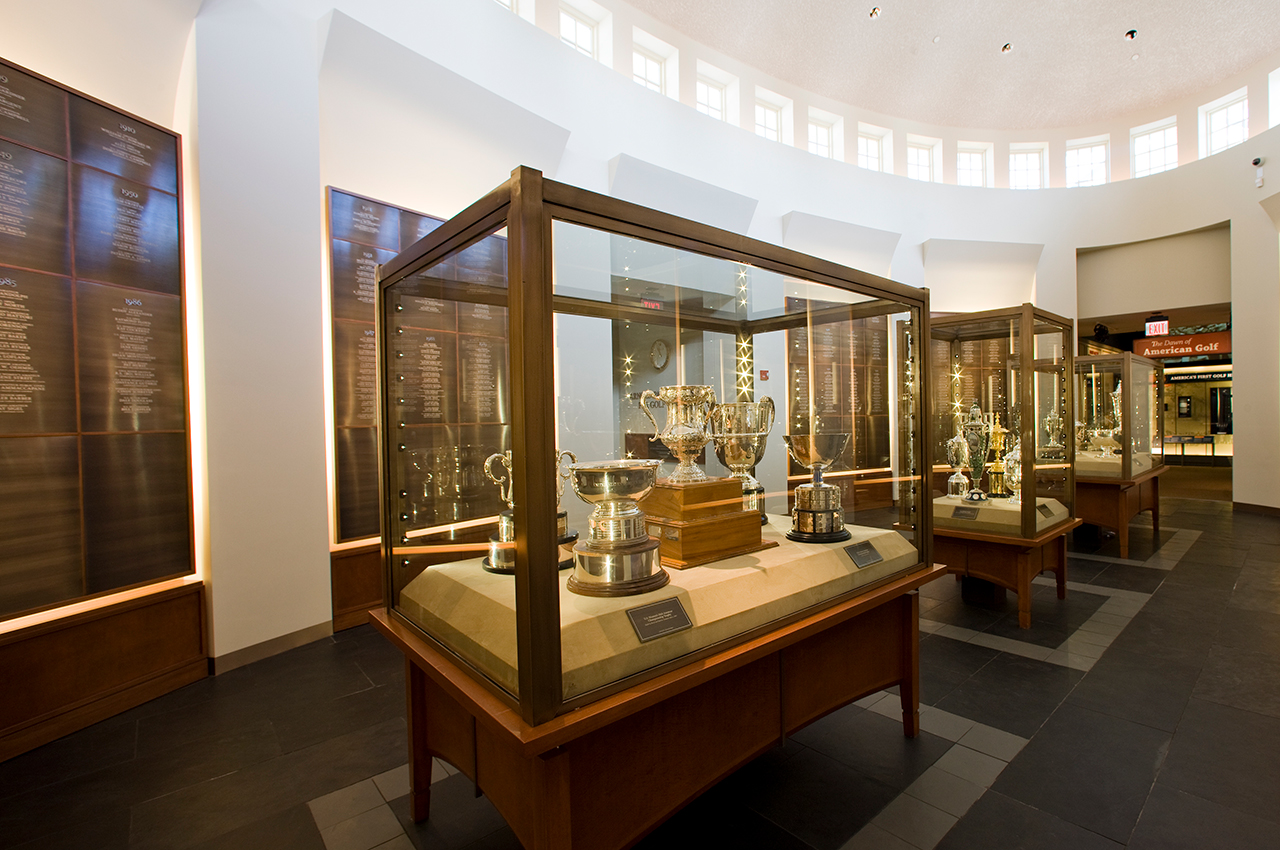(Editor’s note: This is the second article of a four-part series explaining the mission of the United States Golf Association. The USGA, which governs the game of golf in Mexico and the United States, serves several functions. What exactly is the USGA? Why is the organization important? This series delves into these questions and others. This article looks at how the organization not only crowns champions but also works to preserve the game’s history and ensure that future generations remember important people and events from different cultures and backgrounds that make golf unique.)
Jon Rahm’s right fist clenched, and his uppercut in the air would have made Mohammed Ali proud. The crowd behind the 18th green erupted, and Rahm bounded toward the cup, smiling and shouting. He had just holed a long birdie putt at Torrey Pines South and, on that Sunday evening, was on the cusp of winning his first major championship, the 2021 U.S. Open.
Hitting balls in preparation for an unlikely playoff, he learned he had officially won. Rahm hugged his caddie, Adam Hayes, then picked up his son, Kepa, who had been in the arms of Rahm’s wife, Kelley.
“Little man, you have no idea what this means right now,” said Rahm as he hugged the two-month-old boy. He had just become Spain’s first U.S. Open champion. “You will soon enough.”
 Jon Rahm celebrates making a putt for birdie on the 18th green during the final round of the 2021 U.S. Open at Torrey Pines Golf Course (South Course) on June 20, 2021 in San Diego, California. (Photo: Ezra Shaw/Getty Images)
Jon Rahm celebrates making a putt for birdie on the 18th green during the final round of the 2021 U.S. Open at Torrey Pines Golf Course (South Course) on June 20, 2021 in San Diego, California. (Photo: Ezra Shaw/Getty Images)
Rahm’s words and those images were broadcast worldwide and seen by millions of golf fans, instantly becoming a part of the game’s history.
Fifty-six days later, Jensen Castle, a sophomore at the University of Kentucky, also became a part of the game’s history. Seeded No. 63 among the 64 golfers to advance to match play, Castle won the 121st U.S. Women’s Amateur Championship at Westchester Country Club in Harrison, New York, by defeating Yu-Chiang Hou, 2 and 1.
Rahm and Castle’s names are now permanently etched on a wall in the Hall of Champions inside the USGA Golf Museum and Library in Far Hills, New Jersey. All the winners of USGA championships have their names on the walls of that room, which is also the permanent home of the real trophies for each of the USGA’s 14 national championships. Inside their protective cases, they glimmer and shine safely, free for anyone to view.
 The USGA Museum’s Hall of Champions (USGA)
The USGA Museum’s Hall of Champions (USGA)
Along with establishing the rules of the game and testing equipment to ensure it is legal for play, one of the USGA’s biggest jobs is preserving the legacy of golf. That means doing everything it can to ensure future generations remember stars like Rahm and U.S. Women’s Open winner Michelle Wie West, along with winners of other championships, like Castle, and people who played an essential role in the game who did not win major championships.
To that end, the USGA Golf Museum and Library acts as a repository for things like clubs, balls, scorecards and artwork and a place where researchers can access more than 100,000 documents, periodicals, letters and papers in 25 different languages. The collection is constantly growing, and only a tiny part can be displayed to the public at once, but that doesn’t mean the work will stop.

